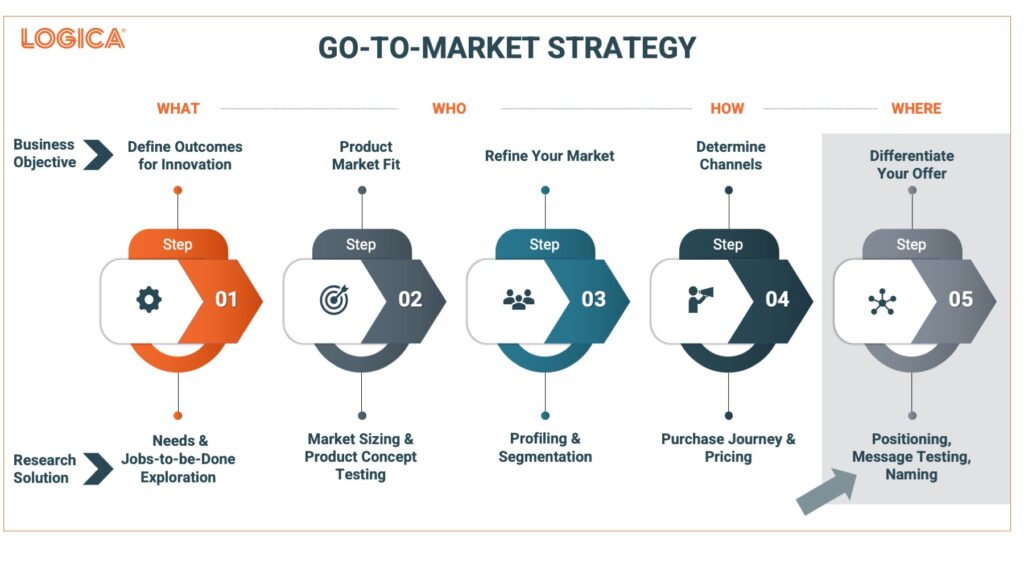Getting Message Testing Right for Financial Brands
What is Message Testing?
Message testing is a vital part of your go-to-market and product launch marketing plan. Identifying the right message for your target market before you launch helps save valuable time and money. For more than 25 years, Logica has been working with financial brands and technology companies to get the insights needed to evaluate how the language they use in their marketing resonates with target markets, customers and prospects. By evaluating message success and performance through Logica’s message testing research steps, you can hone language so messaging resonates deeply with the audiences you want to reach.
Messaging can be tested for specific products, services, solutions or brand communications. Maybe you’re launching a new product and you have already decided on your positioning, but need to know what messages will best connect with customers for marketplace success. Message testing helps save you time and money by identifying the right communications to put forward at the time of launch, and essential to differentiate yourself from the competition.

Message Testing in Quickly Shifting Industries
By evaluating messaging, financial brands, technology companies and growing organizations can hone language so messaging resonates deeply with the audiences they want to reach in a dynamic marketplace. Consumer attitudes shift quickly in the financial and technology landscapes. The best messaging is informed by an exceptional understanding of these fast-moving attitudes, behaviors and emotions.
How Logica Can Help with Message Testing
Logica takes an experienced approach to both B2B message testing and consumer-centric message testing in these quickly moving spaces. Logica’s deep knowledge of the financial services, fintech and technology industries allows for the creation of market research programs that will garner the right insights for the right application in the real marketplace.
Effective Steps to Find the Right Messaging
Step 1 – Qualitative: Early in the development process it is important to explore, ideate, and develop your ideas in collaboration with your target customers. This research phase will provide a deeper understanding of your customers’ motivations, feelings, thought processes, and how your message resonates with your customers.
Qualitative research for message testing allows for a deeper dive, with several options to achieve needed insights:
- In-depth interviews (IDIs): One-on-one interviews that are best for diving deep into preferences, needs or expectations.
- Focus groups: Interviews simultaneously conducted with three or more customers that can incorporate interactive activities to elicit dynamic responses and observe the influence of others’ opinions.
- Immersion/collaborative sessions: These sessions allow for a view of the experience through the customer’s eyes with minimal interaction from researchers.
- Discussion boards: Customizable online format that allows for more multimedia activities, media uploads and flexibility for harder-to-reach customers to participate at their own pace.
Step 2 – Quantitative: Once some initial messages are developed, quantitative research can follow qualitative to validate and select your message for the final marketing approach. Quantitative research provides measurable data that allows for statistical analysis, and a better understanding of how messages are interpreted among a larger scale of people.
Quantitative research for message testing can be designed in several ways:
- Monadic Testing: Only one message is presented. If multiple messages are tested, the sample will be split into groups of respondents, each group viewing one message.
- Sequential Testing: Multiple messages are presented sequentially to respondents, in random order, or in a predetermined order.
- Pairwise Comparisons: Two messages are presented simultaneously to allow for comparisons between the messages.
- MaxDiff Testing: Multiple messages are presented simultaneously. This is beneficial if you need to test a large number of messages.
Choosing the message testing study design with Logica hinges on several factors, including research objectives, current development phase, time constraints, and budget limitations. Qualitative research aids in exploring themes, establishing a broad direction, and narrowing down potential options. And the quantitative research step helps make a definitive messaging selection based on statistical findings and analysis derived from a larger sample size.
B2B Message Testing Case Study
Logica® worked with a B2B payments provider who wanted to differentiate itself in the market by communicating the most relevant and engaging messages for small and medium businesses. Logica conducted a quantitative online survey among multiple target markets to explore the most compelling messages. The project included a range of stimulus materials and carefully chosen analytical tools to identify key messages for this particular target. Visual storytelling of the results and insights were created to help facilitate productive conversations to drive communications decisions. Ultimately, the message testing project and the highly visual reporting helped align stakeholders, identify optimal messages and inform an impactful communications campaign.
Want to understand more about how to turn the dial on message testing and get even more out of your next market research project? Reach out to us!
